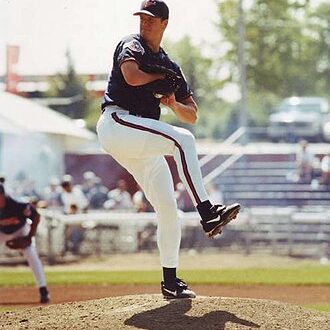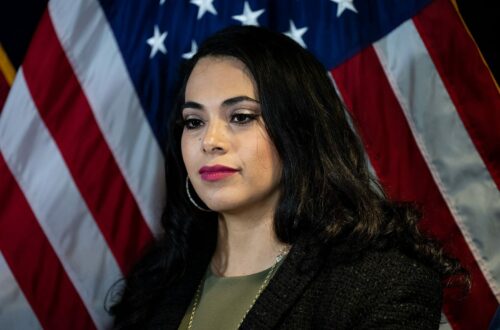Not All Heroes Wear Capes
Most Supreme Hero
Wheelchair van pioneer
Ralph Braun
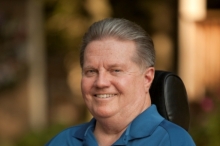
Ralph William Braun (December 18, 1940 – February 8, 2013) was the founder and CEO of the Braun Corporation. He is also known as the “Father of the Mobility Movement” at BraunAbility.
In 1991, the the Braun Entervan was introduced. It was equipped with a ramp and kneel system and removable front seats which allowed the chair user to enter the vehicle independently and drive from their wheelchair.

BraunAbility makes vans that have side entry ramps, as well as models with rear entry ramps. Vans are available with powered ramps, or with manual ramps for people on a smaller budget.
Driving from my wheelchair for the past 11 years has been a godsend!
![]()
Edwin Binney & C. Harold Smith

Founders of Crayola Crayons
The company was founded as Binney & Smith Company by cousins Edwin Binney and Charles Harold Smith[6] in New York City in 1885. Initial products were colorants for industrial use, including red iron oxide pigments used in barn paint and carbon black chemicals used for making tires black and extending their useful lifespan.[7] Binney & Smith’s new process of creating inexpensive black colorants was entered into the chemistry industries competition at the 1900 Paris Exposition under the title “carbon gas blacks, lamp or oil blacks, ‘Peerless’ black” and earned the company a gold medal award in chemical and pharmaceutical arts.[8][9] Also in 1900, the company added production of slate school pencils. Binney’s experimentation with industrial materials, including slate waste, cement, and talc, led to the invention of the first dustless white chalk, for which the company won a gold medal at the 1904 St. Louis World’s Fair.[9]
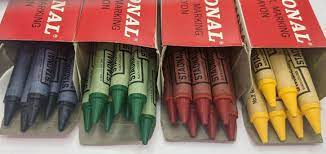
Initially formed as a partnership, Binney & Smith incorporated in 1902, and in that year Binney & Smith developed and introduced the Staonal marking crayon. Then Edwin Binney, working with his wife, Alice Stead Binney, developed his own famous product line of wax crayons beginning on June 10, 1903,[10] which it sold under the brand name Crayola. The Crayola name was coined by Alice Binney who was a former schoolteacher. It comes from craie (French for “chalk”) and ola for “oleaginous” or “oily.”[9][11]
Tom Ross: Remember when Crayola 64 was a status symbol?
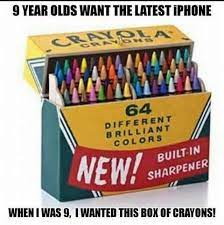
The coolest
Of course, the most sought-after status symbol at Charles R. Van Hise Elementary School was a big box of Crayola 64 crayons. I endured a couple of years with boxes of 16 colors and nervously peeled the paper off my purple crayon as other kids leered at me. They were using the in-box sharpener to ready themselves for the day’s map-coloring exercise – “Let me see now, what color should I make Bolivia?

Tom Ross, Tom. Remember when Crayola 64 was a status symbol? SteamboatPilot&Today.com Aug 28, 2007
https://www.steamboatpilot.com/news/tom-ross-remember-when-crayola-64-was-a-status-symbol/

Willis Carrier
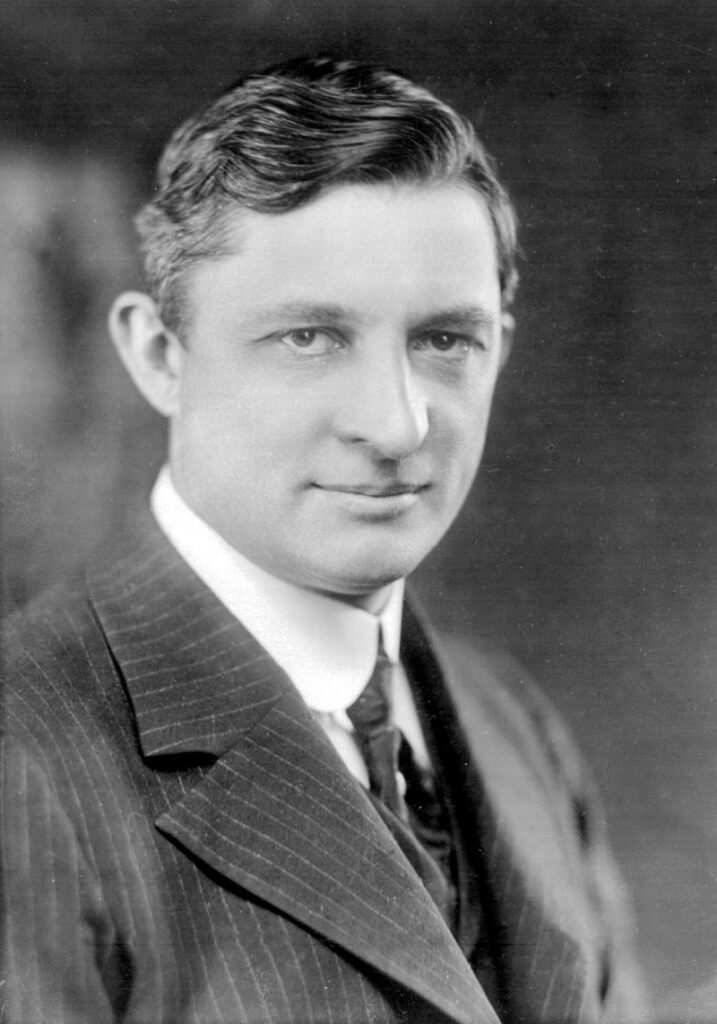
Developed the first air conditioning
Engineer Willis Carrier took a job that would result in the invention of the first modern electrical air conditioning unit. While working for the Buffalo Forge Company in 1902, Carrier was tasked with solving a humidity problem that was causing magazine pages to wrinkle at Sackett-Wilhelms Lithographing and Publishing Company in Brooklyn.

Through a series of experiments, Carrier designed a system that controlled humidity using cooling coils and secured a patent for his “Apparatus for Treating Air,” which could either humidify (by heating water) or dehumidify (by cooling water) air. As he continued testing and refining his technology, he also devised and patented an automatic control system for regulating the humidity and temperature of air in textile mills.
It wasn’t long before Carrier realized that humidity control and air conditioning could benefit many other industries, and he eventually broke off from Buffalo Forge, forming Carrier Engineering Corporation with six other engineers.

Without his invention, my life in the Inland Empire would be a lot tougher, especially in the summer.
https://www.energy.gov/articles/history-air-conditioning
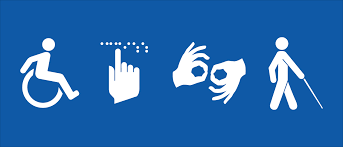
Justin Dart, George H.W. Bush & Senator Tom Harkin (D-Iowa)
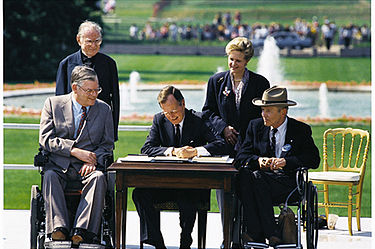
President George H.W. Bush signs the Americans with Disabilities Act of 1990, surrounded by Evan Kemp, Chair of the Equal Employment Opportunity Commission; Justin Dart, Chair of the President’s Committee on Employment of People with Disabilities; Sandra Swift Parrino, Chair of the National Council on Disability; and Rev. Harold Wilke, an ordained minister and disability advocate.
Americans with Disabilities Act
July 26, 1990
The Americans with Disabilities Act of 1990 or ADA (42 U.S.C. § 12101) is a civil rights law that prohibits discrimination based on disability. President Bush signed the Americans with Disabilities Act into law. Senator Tom Harkin (D-IA) authored what became the final bill and was its chief sponsor in the Senate. Harkin delivered part of his introduction speech in sign language, saying it was so his deaf brother could understand.
As DREDF attorney and prominent ADA activist and scholar Arlene Mayerson has aptly and eloquently written in her publication:
The History of the Americans with Disabilities Act-A Movement Perspective
“For the first time in the history of our country, or the history of the world, businesses must stop and think about access to people with disabilities. If the ADA means anything, it means that people with disabilities will no longer be out of sight and out of mind. The ADA is based on a basic presumption that people with disabilities want to work and are capable of working, want to be members of their communities and are capable of being members of their communities and that exclusion and segregation cannot be tolerated. Accommodating a person with a disability is no longer a matter of charity but instead a basic issue of civil rights.
While some in the media portray this new era as falling from the sky unannounced, the thousands of men and women in the disability rights movement know that these rights were hard fought for and are long overdue. The ADA is radical only in comparison to a shameful history of outright exclusion and segregation of people with disabilities. From a civil rights perspective the Americans with Disabilities Act is a codification of simple justice.”
Mayerson, Arlene. “The History of the Americans with Disabilities Act. A Movement Perspective.” Disability Rights Education & Defense Fund, 1992.
https://dredf.org/about-us/publications/the-history-of-the-ada/
The ADA led to significant improvements in terms of access to public services, accessibility in the built environment, and societal understanding of disability.[53]
On signing the measure, George H. W. Bush said:
“I know there may have been concerns that the ADA may be too vague or too costly, or may lead endlessly to litigation. But I want to reassure you right now that my administration and the United States Congress have carefully crafted this Act. We’ve all been determined to ensure that it gives flexibility, particularly in terms of the timetable of implementation; and we’ve been committed to containing the costs that may be incurred…. Let the shameful wall of exclusion finally come tumbling down.”

Hair straightening visionaries

Straightening irons, straighteners, or flat irons work by breaking down the positive hydrogen bonds found in the hair’s cortex, which cause hair to open, bend and become curly. Once the bonds are broken, hair is prevented from holding its original, natural form, though the hydrogen bonds can re-form if exposed to moisture.
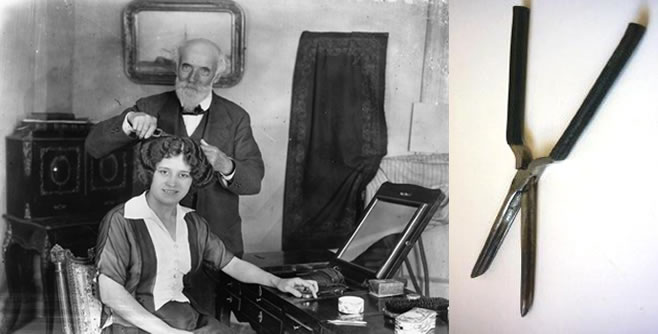
Early hair straightening systems relied on harsh chemicals that tended to damage the hair. In the 1870s, the French hairdresser Marcel Grateau introduced heated metal hair care implements such as hot combs to straighten hair. Madame C.J. Walker used combs with wider teeth and popularized their use together with her system of chemical scalp preparation and straightening lotions.[3] Her mentor Annie Malone is sometimes said to have patented the hot comb.[4] Heated metal implements slide more easily through the hair, reducing damage and dryness. Women in the 1960s sometimes used clothing irons to straighten their hair.
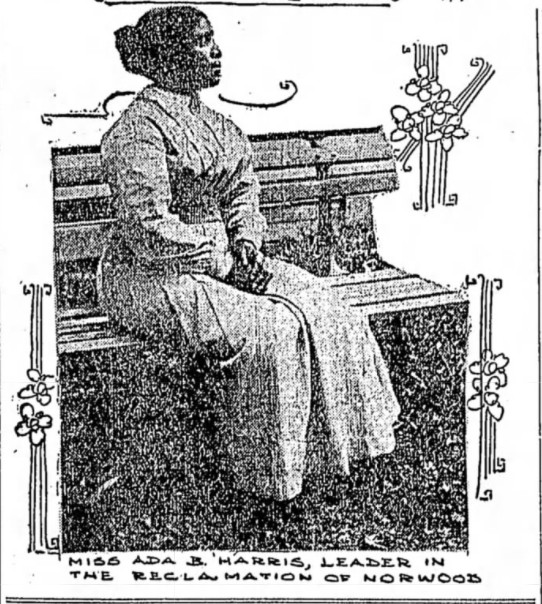
Ada Harris
The woman who invented the straight iron was a school teacher from Indianapolis, a woman forgotten by history. A woman named Ada Harris, looking to lose her curls. The first patent for a hair straightening iron was filed on November 3rd, 1893.
In her patent, she wrote, “My invention relates to a hair straightener whose purpose is to straighten curly hair, and is especially of service to; colored people in straightening their hair.”
Unfortunately, Harris never built an empire with her invention attempting to find investors or a company to purchase her patent. She never did anything with her patent for the hair straightener, perhaps because she didn’t have the finances to help develop her invention. But she should be recognized for the effort made to create this tool.
https://www.racked.com/2017/1/4/14014216/hair-straightener-flat-iron-inventor-ada-harris
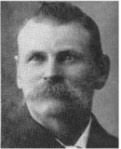
Isaac K. Shero
In 1809 Isaac K. Shero patented the first hair straightener composed of two flat irons that are heated and pressed together.
Ceramic and electrical straighteners were introduced later, allowing adjustment of heat settings and straightener settings.
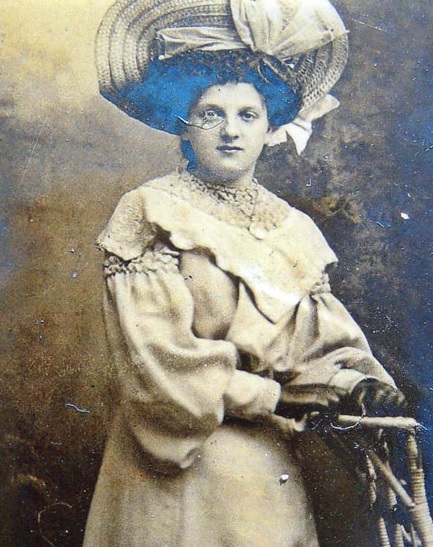
Ms. Lady Jennifer Bell Schofield was that person in1912. Big hair was big fashion with big curls in the early 1900s but Lady Schofield was obsessed with straight hair, and when she did not find the appliance she wanted to straighten her hair. She improved on the ideas of Marcel Grateau and Isaac Shero in the early 1900s to make a better straightening iron.

My defiant bangs rely on this the hair straightener almost daily.

Percy Spencer
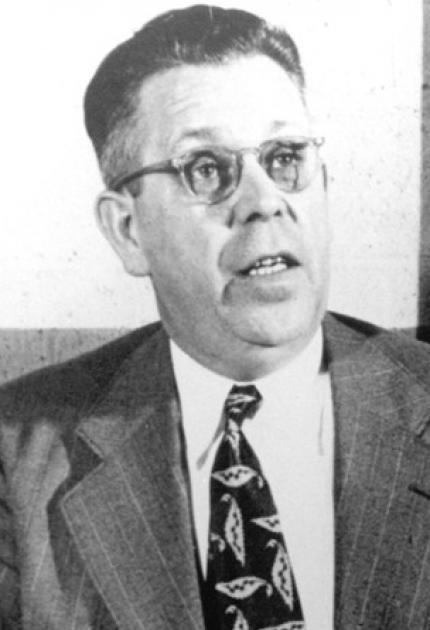
Microwave Oven
The microwave oven was invented as an accidental by-product of war-time (World War 2) radar research using magnetrons (vacuum tubes that produce microwave radiation, a type of electromagnetic radiation that has a wavelength between 1 mm and 30 cm).
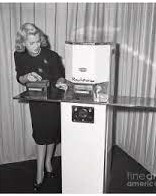
The Raytheon Radarange being demonstrated in 1946.
Image originally appeared on page 15 of the October 14, 1946 publication of the Press and Sun-Bulletin.
In 1946, the engineer Dr. Percy LeBaron Spencer, who worked for the Raytheon Corporation, was working on magnetrons. One day at work, he had a candy bar in his pocket, and found that it had melted. He realized that the microwaves he was working with had caused it to melt. After experimenting, he realized that microwaves would cook foods quickly – even faster than conventional ovens that cook with heat.

Raytheon, then filed a patent on October 8, 1945 for a microwave cooking oven, eventually named the Radarange. The Raytheon Corporation produced the first commercial microwave oven in 1954; it was called the 1161 Radarange. It was large, expensive, and had a power of 1600 watts.
It wasn’t until 1967 that the first microwave oven that was both relatively affordable ($495) and reasonably sized (counter-top model) became available.
Lean Cuisine microwave entries helped me lose about thirty pounds in high school, so I am a loyal microwave user.

Helene Winterstein-Kambersky
Waterproof mascara
Austrian singer and performer Helene Winterstein Kabersky invented waterproof mascara in the 1930’s, after many attempts at developing mascara and other cosmetics that would not smear or run under hot stage lights.
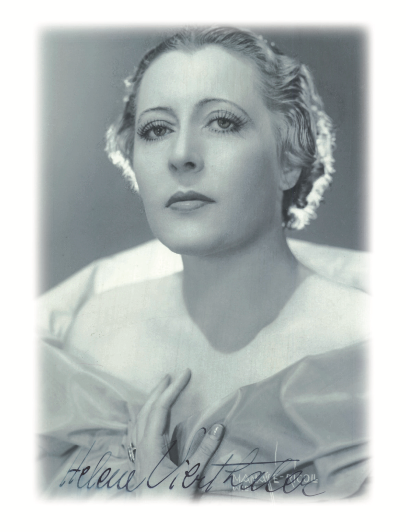
Helene Winterstein-Kambersky, née Vierthaler (13 March 1900 in Vienna – 12 June 1966 in the Hinterbrühl) was a singer and inventor of the world’s first waterproof mascara.
During her numerous stage performances the stage lights repeatedly made her make-up run an left back black marks under her eyes.
This worrying situation caused her to begin work on the perfect mascara in her own kitchen.

After 2000 failed attempts the first patented waterproof mascara in the world was invented and began a new era of cosmetics designed for eyes.
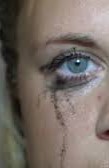
After about two thousand attempts, she made the patented recipe known far beyond the borders of Austria under the name of La Bella Nussy. Winterstein-Kambersky founded a cosmetics company in 1936, which is still family-owned and produces the recipe almost unchanged.

Justus von Liebig
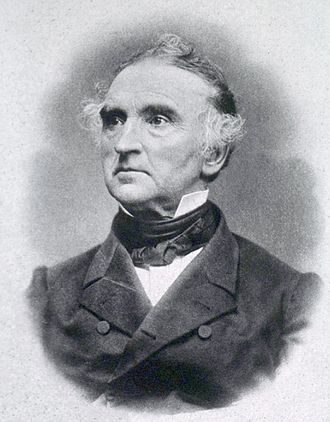
Powdered baby formula

In an attempt to improve the quality of manufactured baby foods, in 1867, Justus von Liebig developed the world’s first commercial infant formula, Liebig’s Soluble Food for Babies.[120] The success of this product quickly gave rise to competitors such as Mellin’s Food, Ridge’s Food for Infants and Nestlé‘s Milk.[121]


Gloria (Campano) Cooper & Charles Cooper
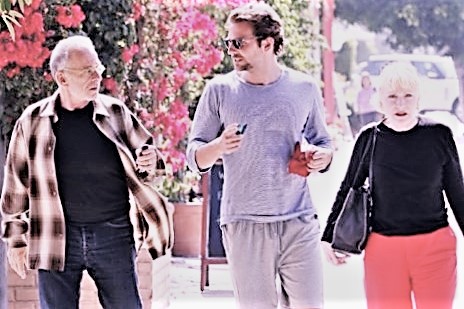
Bradley Cooper Family
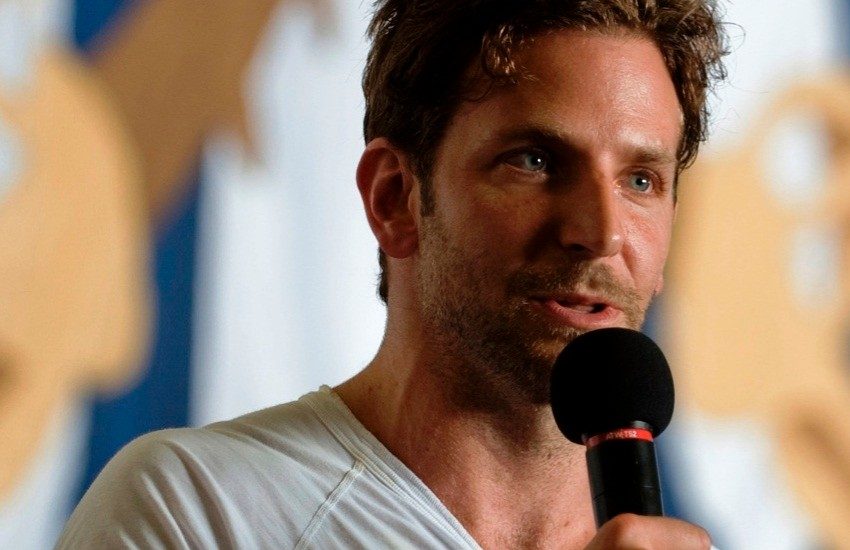
Actor Bradley Cooper addresses the crew of the USS Ronald Reagan underway in the Gulf of Oman, July 13, 2009. U.S. Department of Defense Photo:VIRIN: 158823-L-FDH84-178.jpg

Their union produced him.

Advocates for the left-handed population
Dr. Bryng Bryngelson
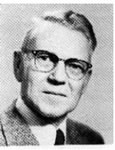
Dr. Bryng Bryngelson, a University of Minnesota speech pathologist and a pioneer in the study of left-handedness, flatly stated that left-handers tend to be more creative and imaginative. But others credit any creativity and imagination shown by left-handers to their efforts to survive in a right-handed world.
Seattle public schools
Countless left-handers tell of developing neck and shoulder pains from from writing at one-armed right-handed desks in school.
13 years ago, a left-handed student filed a formal complaint with the administration at Bellingham’s Western Washington University saying he had been denied an equal educational opportunity because there were no left-handed desks.

It’s hard to write on these tables.
Go to memesr/memes
nightshade_1612
Seattle schools and local colleges do their best these days to rectify old wrongs.
They buy about 10 percent left-handed desks when they place new orders.
In Seattle Public Schools, they also buy left-handed scissors and left-handed pouring ladles for home-economics classes.
Bud Turner, district physical education coordinator, orders two or three left-handed softball mitts for every 15 purchased, “and the same with golf clubs.”
David Hall, an overseer of space needs for the University of Washington’s capital budget office, says that left-handed desks traditionally have been “segregated” – in the front row, back row or at the ends of rows. No longer. When new classroom seating is designed, left-handed desks are scattered randomly throughout the class.
Back in 1979, when Seattle University undertook the remodeling of its nursing building, a committee sat down to discuss the needs of the handicapped. After the usual provisions for ramps, wide doors and special lavatory equipment, someone asked, “But what about left-handers?”
Result: Seattle U bought 15 left-handed desks and 135 right-handed ones. The school’s public-information director later said it was the first time in his memory that left-handedness had been recognized as a handicap.
Dec 20, 1990
Don “Lefty” Duncan, Don Duncan
Duncan, Don https://archive.seattletimes.com/archive/?date=19901220&slug=1110557
Left Out — Left-Handers Are Handicapped In This Right-Handed World, But Why? Arm Yourself With These Facts
It’s nothing big. Some of you may not even notice it. But it is SO nice to have a left-handed chair.
Inventor of soft contact lenses
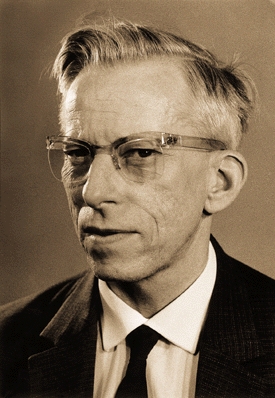
Otto Wichterle
Otto Wichterle (27 October 1913 Prostějov now in the Czech Republic – 18 August 1998) was a Czech chemist known for his invention of modern soft contact lenses in the 1960s.
Czech chemist Otto Wichterle made a huge breakthrough in making the first hydrogel lenses. Together with his colleague Drahoslav Lim, they created a material that absorbed up to 40% water, which was also transparent and could be moulded into a comfortable lens shape. Fun fact: using his son’s toy construction kit, Wichterle produced the first four hydrogel lenses.
Several models of contact lenses (including sketches of the concept by Leonardo da Vinci) preceded Wicherle’s invention. I got contacts when I was 16, over thirty years ago, and they have improved my “vision” of the world immensely!
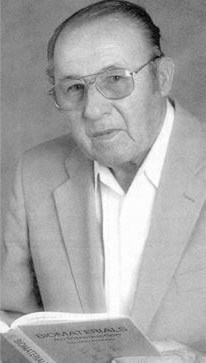
Drahoslav Lím
Drahoslav Lím (September 30, 1925, in Czechoslovakia – August 22, 2003, in San Diego, California)[1] was a Czech chemist. He invented polyhydroxyethylmethacrylate, the synthetic material used for soft contact lenses (hydrogel).
Lím worked[2][3][4][5] as a member of the team of Otto Wichterle (the inventor of soft contact lenses) and in 1955, he came up with poly(hydroethyl-acrylate), the material later used for the lenses. This work was later published in Nature[6] and was the subject of US patents.[7][8] During 1970 to 1974 he worked in Palo Alto, California, improving contact lenses materials and technology.
I’ve worn contacts since high school, so this invention has improved my vision of the world immensely!

